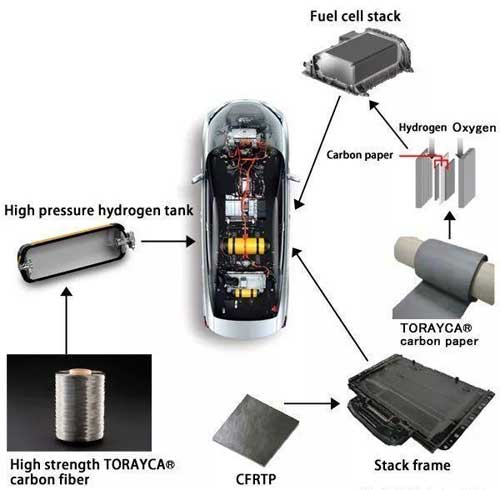In the world of high-performance vehicles, there's a well-known saying: "More than 10 horsepower is less than 10 kilograms." This highlights that raw power isn't everything—lightweight design is just as crucial. Carbon fiber composites (CFRP) are highly valued for their exceptional strength and chemical stability, making them a top choice in performance car design. However, not all high-performance models feature carbon fiber, as it remains a luxury material due to its cost.
This article refers to the address: http://

Carbon fiber offers incredible benefits, but its high cost has limited its widespread use. Currently, it’s mainly found in racing cars, super sports cars, and high-end models. As fuel efficiency and emissions regulations become stricter, lightweighting has become a key strategy for reducing fuel consumption and environmental impact. Studies show that reducing a vehicle’s weight by 10% can improve fuel efficiency by 6-8%, meaning a 100 kg reduction could save 0.3-0.6 liters per 100 km.
The potential of carbon fiber in automotive applications is huge, making it a key material for automakers aiming to meet future challenges. With changing consumer demands and more stringent environmental rules, the use of carbon fiber composites is expected to drive the next wave of innovation in the automotive materials market.
**Carbon Fiber Opportunity Window**
Currently, two main approaches are used to reduce vehicle weight: optimizing structural design and replacing traditional materials with lightweight, high-strength alternatives. Since the first fiber-reinforced composite car, the GM Corvette, was introduced in 1953, composites have played an important role in the automotive industry.
In 1979, Ford tested a lightweight vehicle made from CFRP, using it in parts like body panels, drive shafts, and leaf springs. The test vehicle used 300 kg of carbon fiber and reduced fuel emissions by 35%. Its stiffness was 4-9 times that of FRP and 3-4 times that of metals.
McLaren F1, launched in 1992, was the fastest production car at the time. It used CFRP for the body, which became a key factor in its success. Although carbon fiber is still expensive and mainly used in supercars and F1, its superior properties make it a promising material for the future.
BMW has been heavily invested in carbon fiber technology. In 2009, they partnered with SGL Group to produce carbon fiber for the automotive industry. Starting with the new BMW 7 Series, steel is no longer the only measure of strength. With the i8 and i3, BMW became the first to master mass production of CFRP.
This marked the first time CFRP was used in large-scale production, showing that costs have dropped significantly. BMW now uses a high-pressure epoxy resin process that cuts production time and costs by up to 90%.
Other manufacturers, such as Toyota and Toray, have also developed CFRP for use in structural parts. For example, Toyota’s Mirai uses carbon fiber reinforced thermoplastic composites in its fuel cell framework.

At the 2015 Tokyo Motor Show, Yamaha introduced the Sports Ride Concept, a lightweight sports car weighing only 750 kg. Its iStream CFRP chassis allowed for both lightness and strength, and it became a model for affordable sports cars. This concept continues to inspire future designs.
Volkswagen, Mercedes-Benz, and PSA are also exploring CFRP for various components, including body panels, wheels, seats, and hydrogen tanks.
**Carbon Fiber Bottleneck**
Despite its advantages, CFRP faces several challenges. High production costs remain a major barrier. Carbon fiber is over ten times more expensive than glass fiber, and the epoxy resin used alongside it is also costly.
Another challenge is increasing production efficiency. Most current methods are slow, but automation and advanced techniques like BMW’s high-pressure RTM process can cut cycle times to around 10 minutes.
Recycling is another issue. Up to 30% of carbon fiber is wasted during production, and recycling is difficult without damaging the fibers. Developing efficient and sustainable recycling methods is essential.
Finally, specialized maintenance techniques are needed. Unlike metal, repairing carbon fiber requires different skills and materials. Without proper training and tools, adoption will be slow.
As fuel regulations tighten, automakers are investing more in lightweight technologies. While it may take time for CFRP to become mainstream, ongoing advancements in cost, efficiency, and sustainability suggest it has a bright future in the automotive industry.
110inch Multimedia All-in-One PC
Interactive flat panel display,White Digital Board For School,Interactive flat panel display interactor
Jiangsu Qilong Electronic Technology Co., Ltd. , https://www.qilongtouch.com